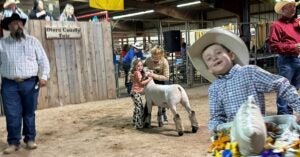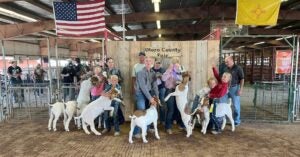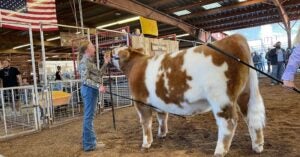Most of the young people who show animals will eventually throw away their banners and ribbons. It’s the lessons learned from peers, parents, and leaders that stick around for a lifetime.
That’s why a select group of people choose to spend their spare time in the barn, and their summer and fall at stock shows and fairs.
But, what about when tensions these young people are exposed to become vocal or physical? We’ve heard more stories this year about fights at local stock shows than any year I can remember. The fights in the parking lots and under livestock pavilions have ranged anywhere from pushing and cussing matches to the more dramatic ripping off of shirts or even old-fashioned fist fights — among grown adults.
Real McCoy Genetics also shared their take on the disturbing show ring culture trend on a social media post last year.
While it admittedly makes for an exciting story at the end of the fair, it’s a disheartening situation. Perhaps it has something to do with the price of feed, livestock, groceries, and fuel, and the emotional stressful toll it’s taking on families.
So far this year, six club steers have sold for six figures — a whole lot of money in most folk’s books. Meanwhile, the cost of forage nearly doubled in our area since last fall, while the price of show feeds went up by nearly 30 percent.
Showing livestock has never been a cost-effective game, but even at the county level, it’s become a significant investment for families that find value in getting their kids into the show barn.

Meanwhile, the reverberations of COVID-19 are something that we’ll likely feel for generations. In a study published in PLOS One, researchers suggested that in the later parts of the pandemic, personality traits changed, demonstrating declines in the human characteristics that help us navigate social situations, trust others, think creatively, and act responsibly. This was especially true among young adults.
ScienceDirect-published studies also discuss social displacement and the impact social media has had on people’s ability to interact effectively in face-to-face settings. It’s no wonder kids and adults are struggling with communication and social interaction.

While those involved in agricultural pursuits may have kept to more business-as-usual lives during the pandemic than their urban or suburban counterparts, these trends toward physical and verbal altercations make me wonder if we weren’t as immune as we thought to the pandemic’s impact in the stock show world.
Passionate people really are difficult people, especially when passion turns into frustration and anger when things aren’t going well. And, to my knowledge, the only type of people who are actively involved in the stock show industry are passionate ones.
Stock show people are also incredibly fortunate people. During a trip to Africa, the family that sold my daughter her show steer last year said they tried to explain raising show cattle to families abroad. They were floored.

Imagine explaining growing and grooming hair on show cattle in the summer heat to families who live in an area of the world where quality food and clean water are a worry for so many — it really puts things into perspective.
There’s no way around spending money if you’re showing livestock. Quality animals are always going to bring a premium, and feeding them well also comes at a cost.
Perhaps, we can take some time to consider how fortunate we are to turn raising livestock into a game that we can teach our kids from. And, if that financial burden is creating too much stress, we can take a step back and look at the big picture, or even look at scaling back in future years. And, at the end of the show day, take some time to fill our bellies with a funnel cake or turkey leg.
Because at the end of the fair, the kids will remember how we, as adults, make them feel and the examples we set. And, as adults involved in stock shows, there are any number of positive reasons why we’ve chosen to show.
We expect excellence out of our kids in the barn and in the show ring. “Do it right, or don’t do it at all,” is something I hear often. So, as adults in the stock show world, I hope that we can look at ways to reduce stress and make positive impressions on our kids. And do more for our own health and wellness along the way, so that we can better enjoy the opportunity to show livestock and teach our kids more about why we show.
Heidi Crnkovic, is the Associate Editor for AGDAILY. She is a New Mexico native with deep-seated roots in the Southwest and a passion for all things agriculture.



